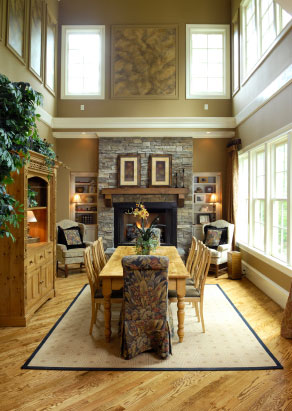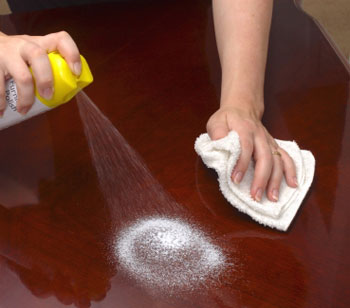Wood Furniture Care and Maintenance

Are you of the idea that maintaining your wood furniture comprises nothing more than dusting it once in awhile? The rugged beauty of wooden furniture gives the somewhat erroneous impression that it requires minimum care. In actual fact, taking care of wood and wooden furniture goes far beyond cleaning and dusting. Wood reacts to environmental changes, such as moisture, temperature and light. Here are a few tips to help your wooden furniture stay gorgeous for generations to come.
- Dust your furniture using a soft cloth or a vacuum cleaner with a dust brush attachment at least once a week. You want to prevent dirt from building up and stick to the surface. Not only will this be a pain to remove, the wood's finishing may be damaged in the cleaning process.
- Always use coasters, place mats or other protective materials when placing anything on top of your wood furniture. Even so, be mindful that metal coasters can sweat onto the wood and some plastic coasters can react with certain wood furniture finishes.
- Do not put hot objects directly onto the wood. You need a sturdy coaster, not those flimsy place mats, under the hot object.
- Be careful with strong-coloured liquids, like coffee and wine, around your wooden furniture. Any accidental spillage on the wood should be immediately cleaned with a cloth using a blotting rather than a wiping action.
Sun Exposure, Temperature and Humidity Exposure to extreme temperature variations can damage the wood. Avoid placing wood furniture near heat or air-conditioning outlets. Ultraviolet radiation can cause severe damage to wood furniture, so avoid direct exposure to sunlight unless it's specially made for the outdoors. Excessively high and low humidity can cause swelling and shrinkage respectively, spoiling the shape of the wood furniture. In tropical Singapore, it is important to buy your furniture from a reliable source to ensure that the furniture is made of dry wood that has been properly treated (e.g. acetic anhydride) and/or finished (e.g. paraffin wax, epoxy paint).
Cleaning A good cleaning can give old furniture a much needed facelift. You need to know the type of finishing the furniture has before knowing how to clean it properly. If you are buying your wood furniture new, ask the store about the finish so that you will know what kind of cleaning and care is needed. If the furniture is already in your possession and you're unsure, take a smaller piece, like a side table, to a qualified wood furniture expert, like a carpenter, to have it assessed.
Polishing
 The type of finish you have will determine the method of polishing needed. Polishing your wood furniture will actually
protect the wood and give it a brilliant shine. Beware, though, of cheap polishes or any polish that contains silicone or alcohol.
Alcohol can have a drying effect on the wood and silicone can often leave a smeared appearance. Polishing is recommended once a month.
For furniture that gets heavy usage, more frequent polishing is advisable.
The type of finish you have will determine the method of polishing needed. Polishing your wood furniture will actually
protect the wood and give it a brilliant shine. Beware, though, of cheap polishes or any polish that contains silicone or alcohol.
Alcohol can have a drying effect on the wood and silicone can often leave a smeared appearance. Polishing is recommended once a month.
For furniture that gets heavy usage, more frequent polishing is advisable.
Finishing Finishes can enhance the aesthetics of wood furniture and go a long way in making the wood less susceptible to stains, spills as well as scratches. Furniture finishes can be classified into several basic types: varnish, penetrating resin, shellac, lacquer, wax, and oil. Each type of finishing has its pros and cons. Choosing a finish comes down to two essential factors: aesthetics and durability. If you want to refinish old furniture, you need to know the exact finishing of your existing furniture. Some finishes can be mixed and some cannot, so always follow the manufacturer's instructions and recommendations.
JOIN OUR MAILING LIST
